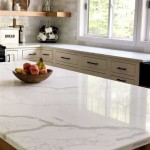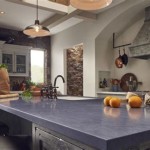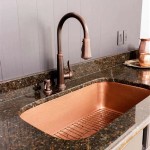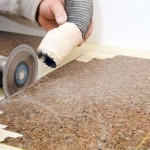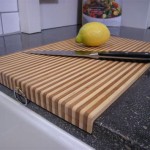Red Oak Butcher Block Countertops: A Durable and Economical Choice
Red oak butcher block countertops have gained considerable popularity as a versatile and aesthetically pleasing option for kitchens, islands, and even workstations. This surge in popularity stems from a combination of factors, including the wood's natural beauty, its inherent durability, and its relatively affordable price point compared to other hardwood alternatives. This article will delve into the characteristics of red oak, its suitability as a countertop material, the advantages and disadvantages of choosing red oak butcher block, and the essential care and maintenance practices required to ensure its longevity and performance.
Butcher block countertops, in general, offer a warm and inviting alternative to manufactured surfaces like laminate, quartz, or solid surface materials. They introduce a natural element into the space, creating a connection to the outdoors and imparting a sense of craftsmanship. While different wood species offer varying levels of hardness, grain patterns, and color variations, red oak presents a specific set of characteristics that make it a compelling choice for budget-conscious homeowners and designers seeking a blend of durability and visual appeal.
Red oak, scientifically known as *Quercus rubra*, is a hardwood native to North America. It's characterized by its reddish-brown hue and prominent grain pattern. The grain is typically straight and coarse, making it visually interesting and adding texture to the countertop surface. The open-pore structure of red oak, while contributing to its absorbency, also makes it receptive to stains and finishes, allowing for a wide range of customization options to match existing cabinetry or desired aesthetic preferences.
The construction of a red oak butcher block countertop typically involves gluing together multiple strips of red oak wood. These strips can be oriented in various ways, resulting in different butcher block styles. Edge grain butcher block features the edges of the wood strips facing upwards, creating a durable and stable surface that is less prone to warping. End grain butcher block, where the ends of the wood strips are exposed, is often considered the most durable and visually appealing option, although it tends to be more expensive and requires specialized construction techniques. Face grain butcher block, with the flat faces of the wood strips visible, is generally the least expensive and easiest to manufacture, but it is also more susceptible to scratches and dents.
Key Point 1: Understanding the Properties of Red Oak
The suitability of red oak for butcher block countertops hinges on its specific properties. One of the most important factors is its hardness, measured by the Janka hardness scale. Red oak boasts a Janka hardness rating of around 1290 lbf (pounds-force), making it a moderately hard wood. This rating indicates its resistance to indentation and wear, essential for a surface that will be subjected to regular use and potential impact from knives, dishes, and other kitchen tools. While not as hard as some other hardwoods like maple or walnut, red oak provides a sufficient level of durability for most residential applications.
Another crucial property is the wood's moisture content. Red oak is known for being relatively porous, meaning it absorbs moisture more readily than denser hardwoods. This porosity can be both an advantage and a disadvantage. On the one hand, it allows the wood to readily accept stains and finishes, enhancing its aesthetic versatility. On the other hand, it makes the countertop more susceptible to water damage, staining from spills, and the potential for bacterial growth if not properly sealed and maintained. Careful sealing and regular application of food-safe mineral oil or butcher block conditioner are therefore essential for protecting the red oak surface and preventing moisture-related issues.
The grain pattern of red oak is also a significant consideration. Its coarse and open grain creates a distinctive visual appeal, adding character and warmth to the kitchen. However, the open grain also means that the surface is not perfectly smooth. While this doesn't necessarily detract from its functionality, it does mean that crumbs and food particles can potentially become trapped in the grain, requiring more diligent cleaning. Proper sealing and finishing can help to mitigate this issue, creating a smoother and more easily cleanable surface.
Furthermore, red oak is a relatively stable wood, meaning it is less prone to warping or cracking due to changes in temperature and humidity compared to some other wood species. This stability is crucial for countertops, as they are often exposed to varying levels of heat and moisture in the kitchen environment. However, it is still important to maintain consistent humidity levels in the home to minimize any potential movement or warping of the wood over time.
Key Point 2: Advantages and Disadvantages of Red Oak Butcher Block
Choosing red oak for a butcher block countertop comes with a set of advantages and disadvantages that should be carefully weighed against individual needs and preferences. One of the most significant advantages is its affordability. Red oak is typically less expensive than other popular countertop materials like granite, quartz, or even other hardwood species like maple or walnut. This makes it an attractive option for homeowners on a budget who still desire the warmth and beauty of a natural wood surface.
Another advantage is its aesthetic versatility. Red oak readily accepts stains and finishes, allowing for a wide range of color options to complement any kitchen design scheme. Whether a light, natural finish is desired to showcase the wood's natural beauty or a darker stain to create a more dramatic look, red oak can be easily customized to achieve the desired aesthetic. Its prominent grain pattern adds character and visual interest to the space, making it a focal point of the kitchen.
Furthermore, red oak is a relatively durable wood, providing sufficient resistance to scratches, dents, and wear for most residential applications. While it is not as hard as some other wood species, its Janka hardness rating is adequate for everyday use. With proper care and maintenance, a red oak butcher block countertop can withstand years of use and retain its beauty.
However, red oak also has some disadvantages that need to be considered. Its porosity makes it more susceptible to water damage and staining compared to denser hardwoods. This means that it requires more diligent sealing and maintenance to prevent these issues. Spills should be wiped up promptly, and the countertop should be regularly treated with food-safe mineral oil or butcher block conditioner to maintain its protective barrier.
Another potential disadvantage is its open grain. While the grain pattern adds visual interest, it can also trap crumbs and food particles, requiring more thorough cleaning. Regular cleaning with a mild soap and water solution is essential to prevent the buildup of debris in the grain. A soft brush can be used to gently scrub the surface and remove any trapped particles.
Finally, red oak is not naturally resistant to bacteria. While wood in general possesses some inherent antimicrobial properties, red oak's porosity can create a favorable environment for bacterial growth if not properly sealed and maintained. Regular cleaning and sanitizing with a food-safe disinfectant are necessary to minimize the risk of bacterial contamination, especially if the countertop is used for food preparation.
Key Point 3: Care and Maintenance for Red Oak Butcher Block Countertops
Proper care and maintenance are crucial for ensuring the longevity and performance of a red oak butcher block countertop. Neglecting these essential practices can lead to water damage, staining, warping, and even bacterial growth, significantly reducing the lifespan and aesthetic appeal of the countertop.
The first and most important step is to properly seal the countertop upon installation. A food-safe sealant, such as mineral oil or butcher block conditioner, should be applied liberally and allowed to soak into the wood. This sealant creates a protective barrier that prevents moisture from penetrating the wood and causing damage. The sealing process should be repeated regularly, typically every few months, or more frequently if the countertop is heavily used.
Regular cleaning is also essential. The countertop should be wiped down after each use with a mild soap and water solution. Avoid using harsh chemicals or abrasive cleaners, as these can damage the sealant and the wood itself. A soft cloth or sponge should be used to gently clean the surface, paying particular attention to any spills or stains. For stubborn stains, a paste of baking soda and water can be applied to the affected area and gently scrubbed with a soft brush.
To prevent water damage, spills should be wiped up promptly. Avoid leaving standing water or liquids on the surface for extended periods. Use trivets or hot pads to protect the countertop from hot pots and pans. Avoid placing wet towels or dishes directly on the surface, as this can trap moisture and lead to water stains.
To maintain the countertop's protective barrier, regular application of food-safe mineral oil or butcher block conditioner is essential. These products replenish the oils in the wood, preventing it from drying out and cracking. They also help to repel water and stains, keeping the countertop looking its best. The frequency of application will depend on the countertop's usage and the humidity levels in the home.
Sanitizing the countertop is also important, especially if it is used for food preparation. A food-safe disinfectant can be used to kill bacteria and prevent the spread of germs. Follow the manufacturer's instructions carefully and ensure that the disinfectant is safe for use on wood surfaces. After sanitizing, the countertop should be rinsed with clean water and dried thoroughly.
Finally, it is important to maintain consistent humidity levels in the home. Extreme fluctuations in temperature and humidity can cause the wood to expand and contract, leading to warping or cracking. A humidifier can be used to maintain consistent humidity levels, especially during dry winter months. A dehumidifier can be used to reduce humidity levels during humid summer months.
By following these essential care and maintenance practices, a red oak butcher block countertop can provide years of durable and beautiful service. While red oak requires more diligent care than some other countertop materials, the effort is well worth it for homeowners who appreciate the warmth, beauty, and affordability of this natural wood surface.

Red Oak Butcher Block Tops

Red Oak Butcher Block Countertops Country Mouldings

Red Oak Butcher Block Tops

Reclaimed Red Oak Kitchen Counters Longleaf Lumber

Red Oak Kitchen Island

Custom Size Red Oak Butcher Block Perfect For Countertops Islands And Tables Etsy

Red Oak Countertop Unfinished

Butcher Block Countertops Pros And Cons Dumpsters Com

Red Oak Custom Crafted Butcher Block

How To Whitewash Butcher Block Desk Jenna Sue Design
See Also

